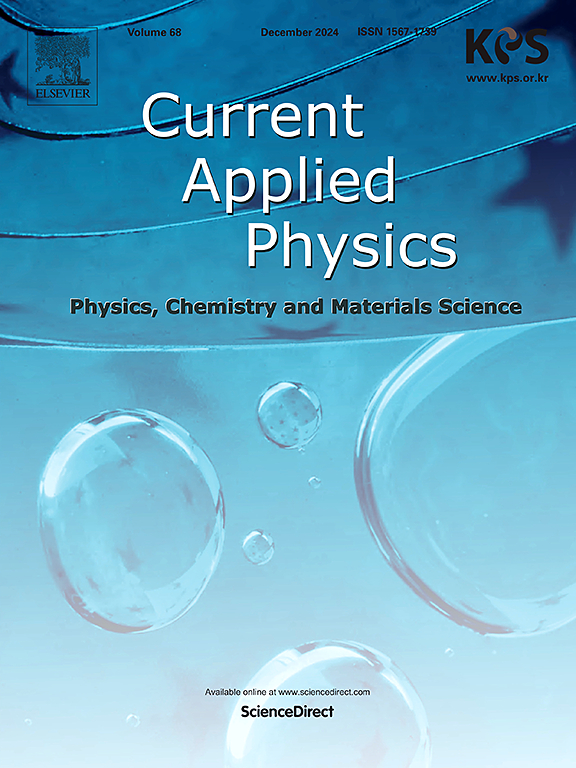Excitation wavelength dependent multiple biomolecule SERS responses from Bi/ZnO thin films towards ultrasensitive Hemoglobin and L-tyrosine detections
IF 3.1
4区 物理与天体物理
Q3 MATERIALS SCIENCE, MULTIDISCIPLINARY
引用次数: 0
Abstract
Fabricated Bi/ZnO bilayer thin films enhances the surface plasmon coupling, creating a superhydrophobic Surface Enhanced Raman Scattering (SERS) platform. The excitation wavelengths, 532 and 785 nm were selected to balance the signal intensity and minimal fluorescence interference, towards improving the detection accuracy across a range of biomarkers from monomers to complex proteins. The films consist of columnar wurtzite ZnO base with orthorhombic metallic Bi on top. The minimal chemical changes at Bi: ZnO interface, confines the local electric field to surface. Cancer and neurodegenerative biomarkers, Hemoglobin (Hb) and L-tyrosine (Tyr), studied for Limit of Detection (LoD) using respective laser achieved, a 10 fM LoD with SERS enhancement factor (EF) of 8.42 x 1011 for Hb (532 nm), and a 10 aM LoD with 6.60 x 1015 SERS EF for Tyr (785 nm). These unprecedented detection thresholds demonstrate the ultrasensitive detection capabilities of the fabricated SERS platform for early medical diagnosis.

Bi/ZnO薄膜对超敏血红蛋白和l -酪氨酸检测的激发波长依赖的多生物分子SERS响应
制备的Bi/ZnO双层薄膜增强了表面等离子体耦合,创造了一个超疏水表面增强拉曼散射(SERS)平台。选择532和785 nm的激发波长来平衡信号强度和最小的荧光干扰,以提高从单体到复杂蛋白质的一系列生物标志物的检测精度。薄膜由柱状纤锌矿ZnO基底和顶部的正交金属铋组成。Bi: ZnO界面的微小化学变化将局部电场限制在表面。癌症和神经退行性生物标志物血红蛋白(Hb)和l -酪氨酸(Tyr)使用各自的激光进行检测限(LoD)研究,10 fM LoD, Hb (532 nm) SERS增强因子(EF)为8.42 x 1011, 10 aM LoD, Tyr (785 nm) SERS增强因子为6.60 x 1015。这些前所未有的检测阈值证明了制造的SERS平台在早期医学诊断方面的超灵敏检测能力。
本文章由计算机程序翻译,如有差异,请以英文原文为准。
求助全文
约1分钟内获得全文
求助全文
来源期刊

Current Applied Physics
物理-材料科学:综合
CiteScore
4.80
自引率
0.00%
发文量
213
审稿时长
33 days
期刊介绍:
Current Applied Physics (Curr. Appl. Phys.) is a monthly published international journal covering all the fields of applied science investigating the physics of the advanced materials for future applications.
Other areas covered: Experimental and theoretical aspects of advanced materials and devices dealing with synthesis or structural chemistry, physical and electronic properties, photonics, engineering applications, and uniquely pertinent measurement or analytical techniques.
Current Applied Physics, published since 2001, covers physics, chemistry and materials science, including bio-materials, with their engineering aspects. It is a truly interdisciplinary journal opening a forum for scientists of all related fields, a unique point of the journal discriminating it from other worldwide and/or Pacific Rim applied physics journals.
Regular research papers, letters and review articles with contents meeting the scope of the journal will be considered for publication after peer review.
The Journal is owned by the Korean Physical Society.
 求助内容:
求助内容: 应助结果提醒方式:
应助结果提醒方式:


